Welcome to Lesson 1 of SKMLifestyle’s Chinese learning course. In this lesson, we’ll be learning interesting Mandarin language basics. Are you excited about the upcoming new journey to learn Mandarin? Alright, without further delay, let’s learn Chinese language in English.
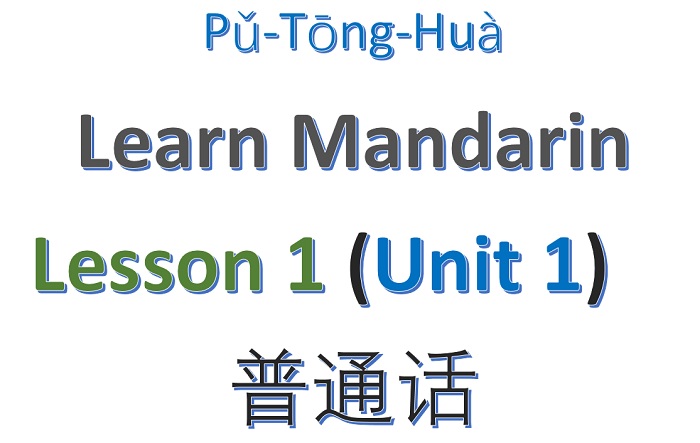
Well, most of the Chinese learning course or books that you’d often refer to, will invariably teach you greetings or pinyin pronunciations in the very first lesson. Ok, not all, but most courses might teach you pinyin in the Lesson 1. I don’t necessarily agree that pinyin is the best way to begin with learning Chinese. I simply don’t agree – I’m an iconoclast.
Moreover, you know the danger of starting with Pinyin in the first lesson? Well, it could prove to be a huge risk. For example, if the initial lessons didn’t go well or you just didn’t find it interesting for whatever reasons, you may lose the motivation to learn Mandarin very fast. And that’s not even the last thing I’d want to happen in the Chinese learning journey.
In fact, I believe that when you are learning Chinese, first of all you should dig what you already know. This will help you to feel more comfortable with the complex language like Chinese. For example, do you know any Chinese city’s name? How about the Chinese capital city? Alright, its Beijing.
Related post – check out all lessons from Unit 1.
If you are a foreigner to have reached so far so as to learn Mandarin, I’d fairly assume that you know at least a few Chinese city names, such as Beijing, Shanghai, etc. Chinese names often have deep meanings, including the cities’ names. For example, do you know the meaning of Beijing? Any guesses?
Well, here “Bei” means “north”, and “Jing” means “capital”. So Beijing literally means “northern capital”. You can feel the beauty of learning Chinese. You need to know the characters, then put them together in a certain order to form a variety of words. These words, when put together give us sentences. Sentences are put together to form paragraphs, and so on. That means, the foundation lies in learning the characters. So the first few lessons of this Chinese learning course are aimed at making you familiar with the basic Mandarin characters and related words. I’d assume that you can read English letters and words.
Don’t worry too much about the remembering the mandarin characters and tones (placed on top of vowels) as of now. For now, just focus on learning the main ideas behind the characters and words. The rest will naturally follow. Moreover, we’d learn Chinese language in English (as far as possible), so don’t take too much of a load as of now.
Btw, is there any “south capital”? Let’s dig further! However, before we move on, let me list down all the 4 directions.
How do you say directions when you learn Chinese language in English?
Here is the list for your reference-
- North (北, Běi)
- South (南, Nán)
- West (西, Xī)
- East (东, Dōng)
Here is a simple diagram to explain the same-
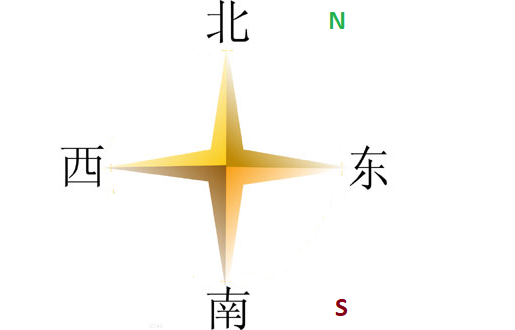
Basically, North in Mandarin is written as 北 (Běi), and the Chinese character to represent Capital (Jing) is 京 (jīng). Taken together, Beijing (北京, Běijīng) represents the northern capital.
As you can guess, Nanjing (南京, Nánjīng) means South capital. That’s right. Nanjing is another massive and historical Chinese city that witnessed, massacre in 1937 (nearly 40,000 to 300,000- people were killed). Btw, Nanjing is also the capital of Jiangsu province of China.
As curious reader, you might wonder how about other two combinations (e.g. Dongjing and Xijing). Well, there is another city called Dōngjīng, which basically means east capital. Interestingly, Dōngjīng is not in China. In fact, Dōngjīng is the Chinese name for Tokyo, the Japanese capital city.
We are still left with one more combination – Xijing. Well, surprisingly, there is no city called Xijing. But there is a city called Xian (西安, Xīān). In fact, Xian is a very important historical city in China. It was the capital of China for more than 1000 years, and it’s famous for the Terracotta Army. Now Xian is the capital of the Shaanxi province of China. In fact, the name “China” comes from the Qin dynasty that was based around Xian that united China (earlier there were too many kingdoms). The Terracotta Army is associated with the same Qin dynasty, the first dynasty in China.
Please note that there is no other city in China or elsewhere with the “Jing” tag. There are only three Jings – Beijing, Nanjing, and Dongjing. 🙂
Btw, how do you write Shaanxi in Chinese? We’ll explore the same in the next lessons. Hold on for a while, as I want to explore the characters that I have already introduced to you.
Learn Gates in Mandarin Chinese
Chinese cities are usually very big. Each Chinese city has its own socio-cultural history. Then there are huge parks and temples in almost every Chinese city. It’s very common for the parks and temple premises to have multiple gates, often named as North Gate, South Gate, etc.
How do you say gate in Chinese? Well, in Chinese a gate is referred to Mén (门). Can you guess how the North Gate would be written as? Let me list all the 4 direction based gates quickly:
- North Gate (北门, Běi Mén)
- South Gate (南门, Nán Mén)
- West Gate (西门, Xī Mén)
- East Gate (东门, Dōng Mén)
I suppose it’s very simple for you to master these words by now. Alright, here is a picture to help you further with Mandarin language basics.
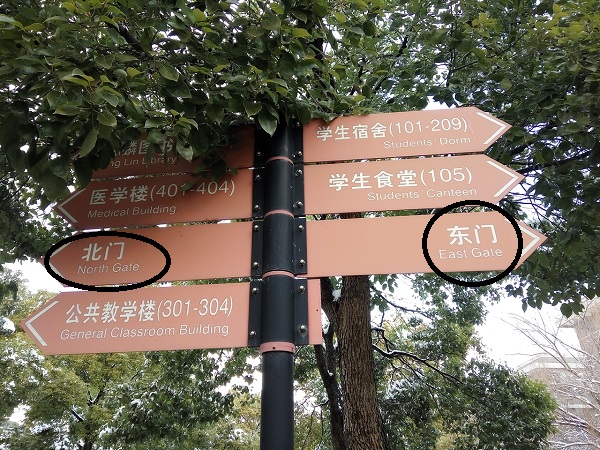
Learn Entrance and exits in Mandarin Chinese
When you visit a park in China, you’d see multiple entrances and exits of the park. The entry and exit point of the parks of the temples could be marked in another way. For example, North Exit, South Exit and North Entrance, South Entrance.
So coming to the next part, how do you say exit and entrance in Chinese? Well, let me introduce some more characters, and then we’ll learn related words-
- Enter (入, Rù)
- Out (出, Chū)
- Mouth (口, Kǒu)
- Entrance (入口, Rù kǒu)
- Exit (出口, Chū kǒu)
- Gateway (Exit-Enter) – (出入口, Chū rù kǒu)
How to remember Chinese Characters?
Fret not, these characters are very easy to remember if you have the basic literacy. For example, “Enter” is similar to the Greek character λ (Lambda), “Out” is basically two “E” letters concatenate and rotated 90` anticlockwise. Mouth resembles a square (口).
In Chinese, mouth is written as 口(kǒu) and exit is basically “out” and “mouth” put together (e.g. mouth to come out from a park).
Entrance (入口) is basically Lambda and Square put together, side by side. Are you with me? If not, just look at the characters and words with a peaceful mind. I am sure you’d get it. 🙂
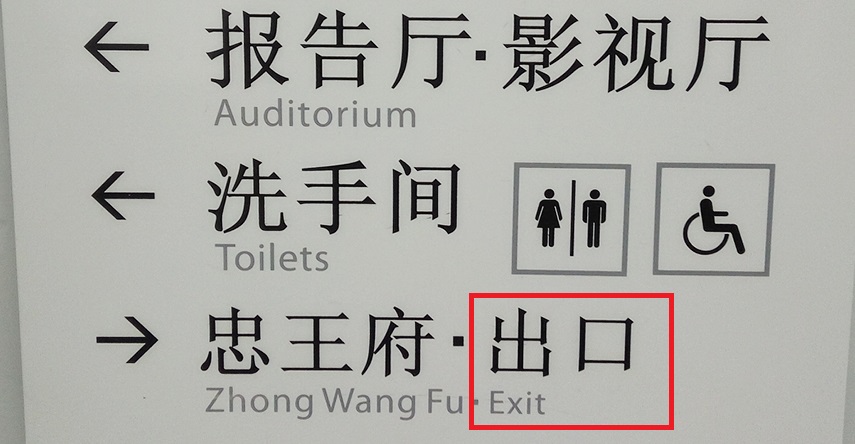
Assuming that now you know these characters, let me show you quickly how we’d write names of exit/entrance gates of Chinese parks, temple, etc.-
- North exit (北出口, Běi Chū kǒu)
- South exit (南出口, Nán Chū kǒu)
- West exit (西出口, Xī Chū kǒu)
- East exit (东出口, Dōng Chū kǒu)
- North entrance (北入口, Běi Rù kǒu)
- South entrance (南入口, Nán Rù kǒu)
- West entrance (西入口, Xī Rù kǒu)
- East entrance (东入口, Dōng Rù kǒu)
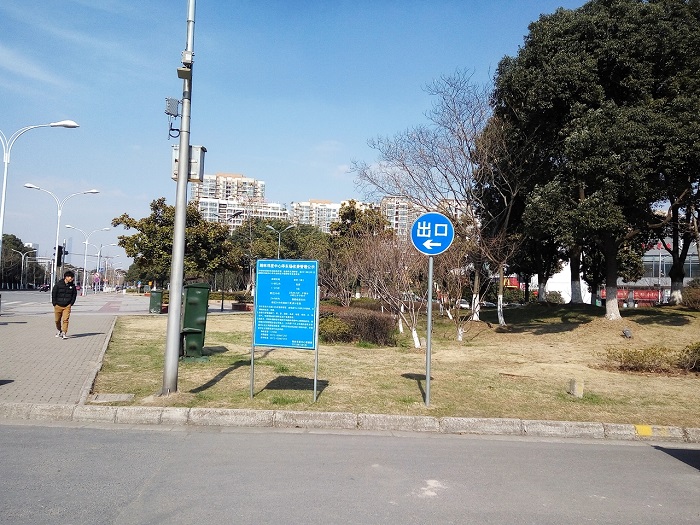
I believe that now if you visit temples and parks in China, you can easily interpret name of the gates, including exit and entrances.
Online Shopping in China
I also plan to write separate articles on shopping in China. For now, I just wanted to let you know that if you want to do online shopping in China, then you can try JingDong. It’s my favorite site for buying electronic goods (such as laptop, keyboard, mouse, Wi-Fi routers, etc.) online. The delivery by JingDong is so fast. For example, I ordered my Wi-Fi router on the Friday evening around 6pm, and it was delivered the very next morning by 10am (on Saturday) to my address.
Btw, the reason to bring this topic here is to ask if now you can write JingDong in Chinese? Well, that’s write, it’s written as 京东 (Jīngdōng).
You see, once you know a few characters, you just need to combine them to form new words. That’s how new words are continually being added to the Mandarin language.
That’s all in this Lesson 1 of Chinese learning course.
Feeling confident about the lessons? Cool! Try the Chinese Language Proficiency Test and see how much you now you know Mandarin Chinese. Be brave enough to not look at the answers before evaluating the questions (and of course deciding the answers). 🙂
You can also directly head to the next lesson of the Chinese Language course.
I hope now it’s easier for you to learn Chinese language in English by now.
Related post – check out all lessons from Unit 1.
If you have any question on how to learn Chinese language in English, feel free to post in our forum so that others could also contribute and learn. For regular updates like us on Facebook, or follow on Twitter!
If you find the write-ups useful, buy me a beer!
Good luck with Chinese learning course.
Happy learning Mandarin Chinese!
Cheers!
Last updated: Saturday, March 3, 2018